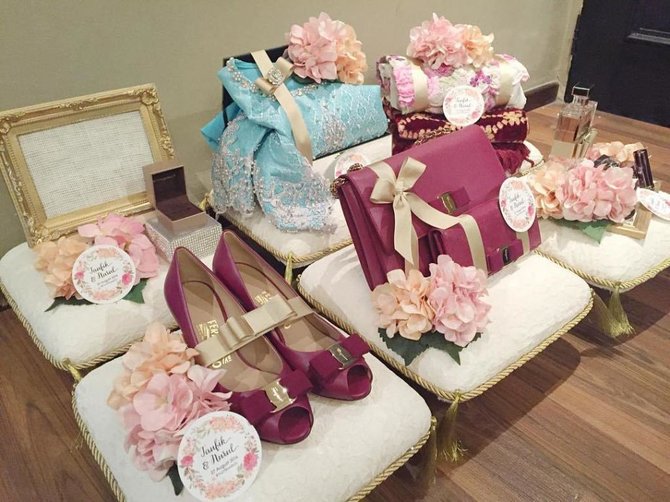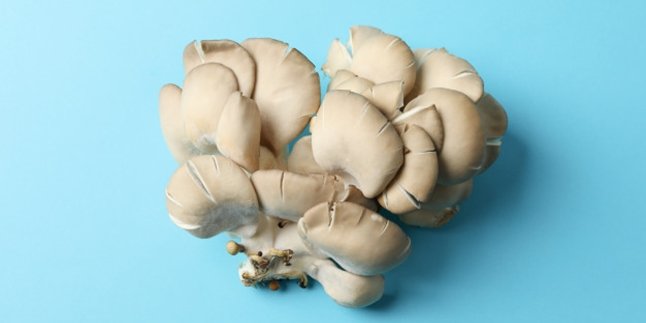Kapanlagi.com - Seserahan, hantaran and mahar are a series of rituals in a wedding ceremony that cannot be missed. These three parts of the wedding are still quite unfamiliar to some people, especially important to be understood by the bride and groom. Because the differences between seserahan, hantaran, and mahar are actually very subtle and confusing.
Wedding is a highly anticipated moment for every couple. Because marriage is a sacred bond for two lovers to formalize their relationship. However, in a wedding ceremony, there are various rituals that must be passed according to each culture and tradition. In Indonesia, there are various types of wedding ceremonies.
For example, in Javanese traditional wedding, there are several rituals that must be passed, such as pasang tratag, preparing kembar mayang, pasang tuwuhan, siraman, dodol dawet, dulangan pungkasan, midodareni, and so on, which become a long series of wedding rituals that must be carried out.
However, regardless of the wedding process based on culture and tradition, the process of engagement, pengajian (Islamic religious ceremony), giving seserahan, hantaran, and mahar are commonly done in the concept of weddings in Indonesia. Unfortunately, many people may still be confused in distinguishing seserahan, hantaran, and mahar.
Because the differences between the three are very subtle but can be easily recognized. As for the differences in seserahan, hantaran, and mahar that need to be known, they are explained in the following points. For a more complete understanding, please read the following discussion regarding the differences in seserahan, hantaran, and mahar that are important for prospective brides and grooms.
1. Understanding Seserahan

(credit: freepik.com)
Before discussing the differences in seserahan, hantaran, and mahar, it is good to understand the meaning of these three types of wedding components first. Seserahan itself can be interpreted as a symbol given by the groom to the bride as a form of responsibility towards the future wife.
In this case, the responsibility can take the form of fulfilling various needs of the bride and her family after marriage. Seserahan can also be interpreted as a sign of heart connection between both families.
2. Understanding Hantaran
Meanwhile, hantaran can be defined as a gift for the door knocker for both sides of the family. The hantaran is given by the groom's side to the bride's family or the bride's side to the groom's side.
The hantaran can consist of various types of food, fruits, rice, and so on. The hantaran is given to each side of the family as a form of strengthening the relationship.
3. Understanding Mahar

(credit: freepik.com)
The understanding of mahar can be defined as the pure right of the bride as a valid condition for marriage. In Islam, mahar is included as a valid condition for a wedding ceremony given during the akad. The mahar is given by the groom to the bride on the day of the wedding akad.
The bride can request various types of mahar from the groom, ranging from money to gold and other things, according to the agreement of both parties and without burdening the groom.
4. Differences between Seserahan, Hantaran, and Mahar

(credit: Hitsbanget.com/merdeka.com)
After understanding the meaning of 'seserahan', 'hantaran', and 'mahar', you can easily differentiate them. But for a more complete and clear explanation, here are the differences between 'seserahan', 'hantaran', and 'mahar'.
The difference between 'seserahan' and 'hantaran' and 'mahar' is that 'seserahan' is given from the groom's side to the bride's side. In contrast, 'hantaran' is given by both the groom and the bride. Both sides exchange and receive the 'hantaran' that is given. Meanwhile, 'mahar' is given by the groom as a requirement for a valid marriage on the wedding day.
Based on its form, 'seserahan' can be various women's needs such as cosmetics, bathing equipment, clothing, shoes, and others. Meanwhile, 'mahar' usually consists of various types of traditional food, fruits, rice, and others. In contrast, 'mahar' can be in the form of money as a reference, gold, a set of prayer tools, and others according to the groom's ability and agreement between both parties.
Based on the time of giving, 'seserahan' can be given during the engagement or on the wedding day, depending on the contents of the 'seserahan' and the time gap between the engagement and the wedding. Similarly, 'hantaran' can be given during wedding processions such as the engagement. Meanwhile, 'mahar' is given on the wedding day or during the marriage ceremony.
5. Various Contents in Seserahan, Hantaran, and Mahar

(credit: flickr.com/firtian afifah yurma/)
The differences in seserahan can be seen from the various contents found in seserahan, hantaran, and mahar. For a more complete explanation, please refer to the following review regarding the contents of seserahan, hantaran, and mahar that need to be understood by the prospective bride.
- Various contents of seserahan: The various contents of seserahan can usually be items used by the prospective bride, ranging from cosmetics, clothing, bags, shoes, bathing equipment, and so on.
- Various contents of hantaran: As explained earlier, some examples of hantaran contents can be various types of traditional cakes, fruits, rice, sugar, and various other items arranged in an attractive design.
- Various types of mahar: Mahar can be in the form of cash, gold, a set of prayer tools, or other types of mahar.
So those are the important differences in seserahan, hantaran, and mahar that need to be known by the prospective bride. Various wedding processions and preparations leading up to the wedding day can be adjusted to the customs and cultures of each individual.
(kpl/nlw)
Disclaimer: This translation from Bahasa Indonesia to English has been generated by Artificial Intelligence.
















